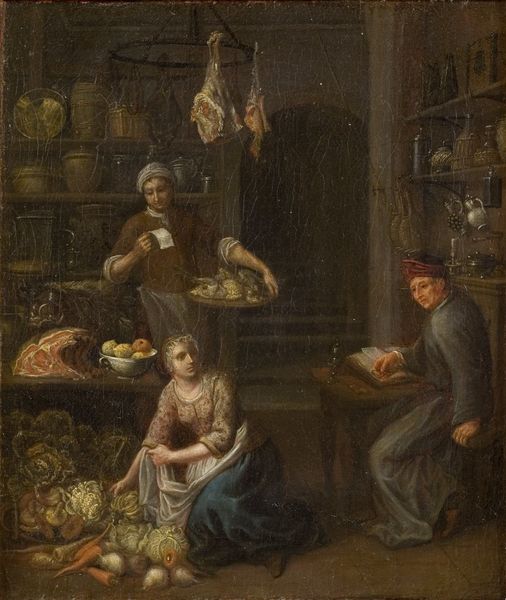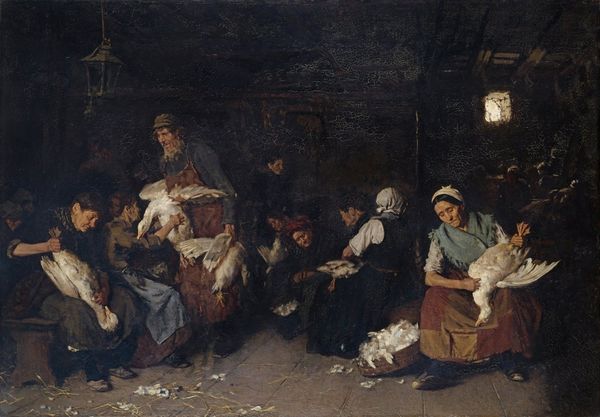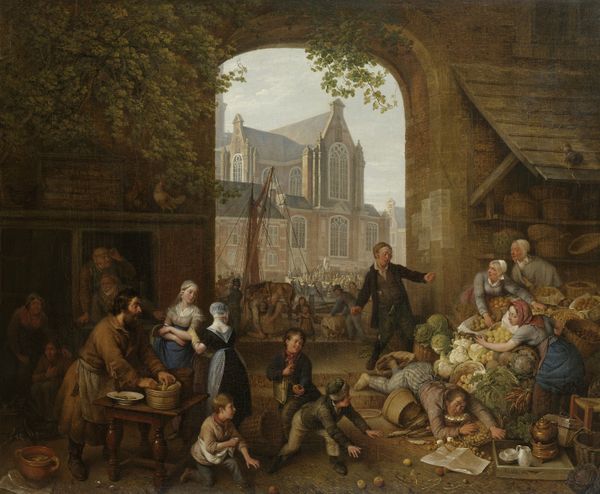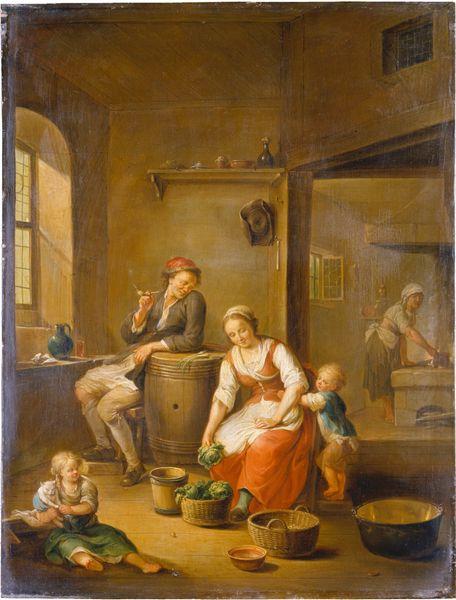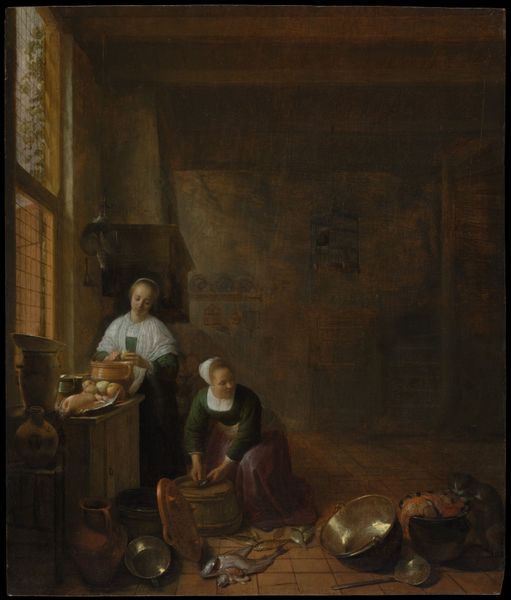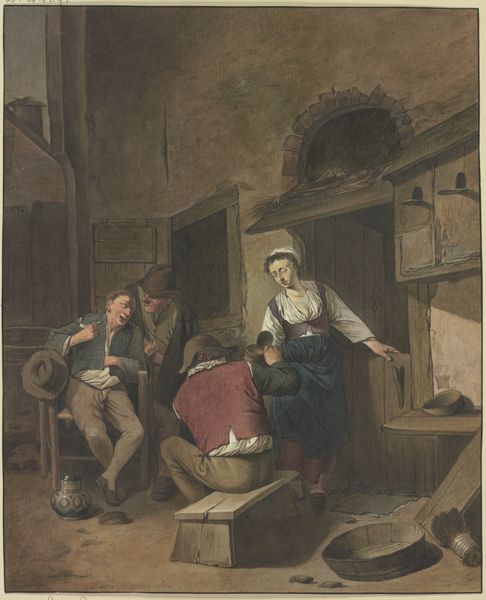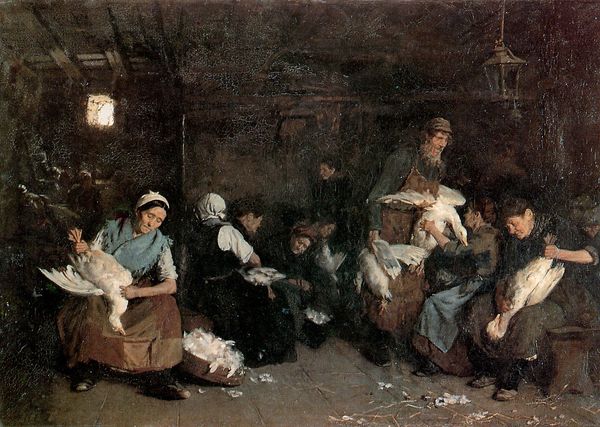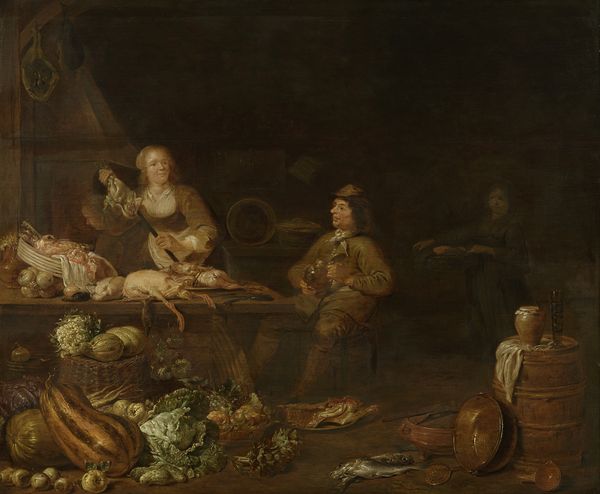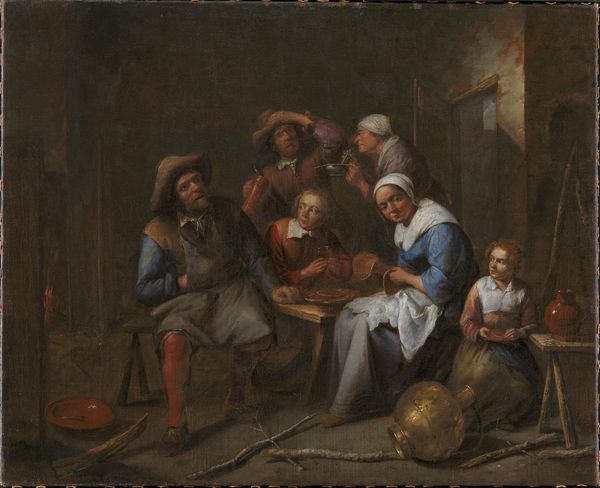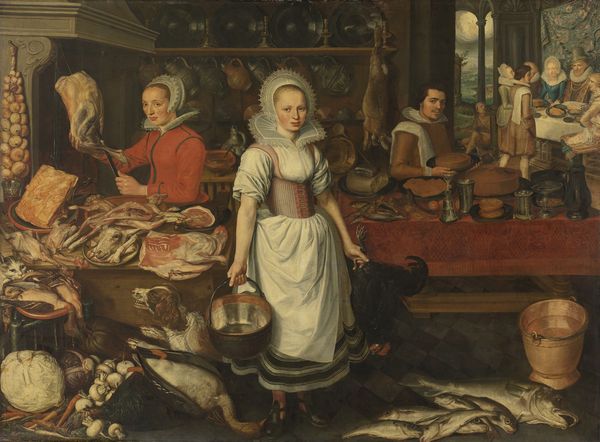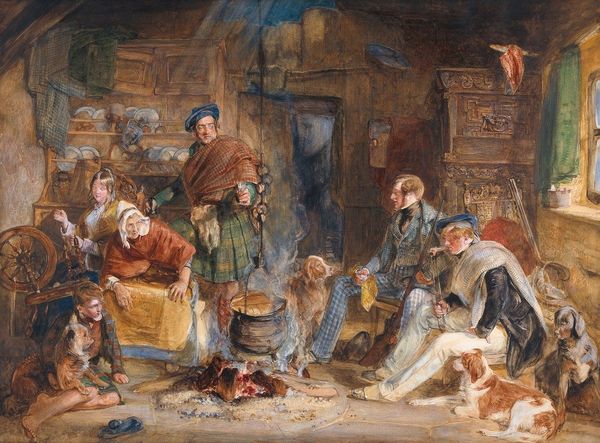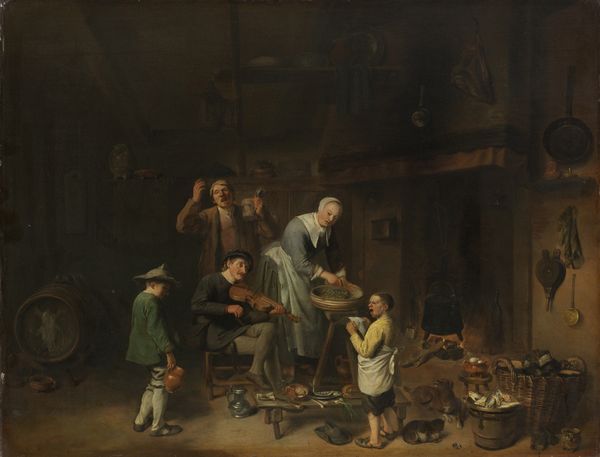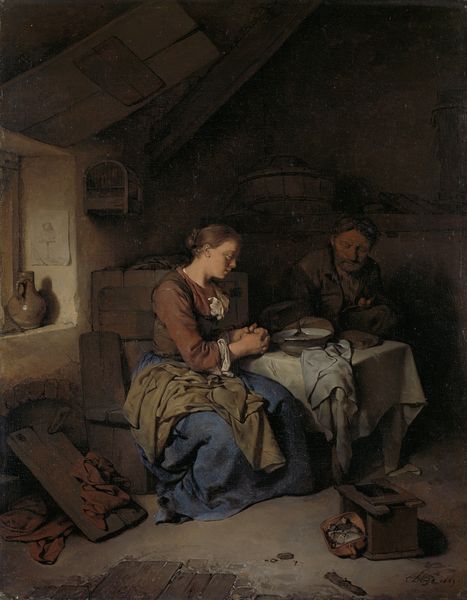
Dimensions: support: 580 x 494 mm frame: 732 x 637 x 82 mm
Copyright: CC-BY-NC-ND 4.0 DEED, Photo: Tate
Editor: Here we have Johan Zoffany's "A Florentine Fruit Stall," currently residing at the Tate. I'm immediately drawn to the textural contrasts between the woven baskets and the smooth skin of the fruits. What compositional elements stand out to you? Curator: Note how Zoffany masterfully employs chiaroscuro, creating depth and drawing the eye to the centrally positioned figures. The arrangement of the fruits and vegetables isn't merely representational; it's a carefully constructed still life within a larger genre scene. The gaze is also crucial; where do you feel it leads you? Editor: It definitely bounces between the figures, creating a sense of narrative. So, is the artist focusing more on the visual structure here? Curator: Precisely. The interplay of light, form, and the strategic arrangement of elements transcend a simple depiction of a market scene. The artist encourages us to look beyond the narrative and consider the formal relationships within the work itself. Editor: That's fascinating; I hadn't considered the formal elements as the primary focus. Curator: Indeed, it’s a reminder that art can communicate powerfully through its intrinsic qualities.
Comments
tate 7 months ago
⋮
http://www.tate.org.uk/art/artworks/zoffany-a-florentine-fruit-stall-t00054
Join the conversation
Join millions of artists and users on Artera today and experience the ultimate creative platform.
tate 7 months ago
⋮
This is probably the picture described in Zoffany's posthumous studio sale catalogue (1811) as 'a most excellent groupe, very highly finished and one of his best performances'. The indications are that, as it was in his possession until his death, Zoffany painted it for his own pleasure.The four main figures, probably painted from living models, are an old beggar, a market-woman, her daughter and a girl, perhaps a contadina (country girl), with a basket. In the background is a humorously depicted Capuchin friar. The actions of the two right-hand figures, who invite a purchaser to buy their goods, suggest that the picture was cut down on the right, and indeed a 1962 cleaning revealed a fragment of a figure to the right of the girl's shoulder. As the picture was unlikely to have been square in shape, it is likely that several figures were originally included on the right.Zoffany was in Florence from 1772 to 1778 painting commissions for the Grand-Ducal family. This picture was probably made in autumn of 1777, when Zoffany was in the final stages of completing The Interior of the Tribuna at Florence. It is comparable in style to his genre paintings The Optician, which was exhibited at the Royal Academy in 1772 (Royal Collection), and The Wandering Minstrels, which he gave to the Parma Gallery at that time. The artist appears to have been known in his day as a painter of market scenes. Hester Thrale (Mrs Piozzi) perhaps had this picture in mind when she wrote in her Observations of a Journey through Italy in 1784: 'My chief amusement at Alexandria was to look out upon the huddled market-place ... and who could help longing there for Zoffani's pencil to paint the lively scene?' (published in Piozzi, Glimpses of Italian Society in the Eighteenth Century, London 1892, p.53).Further reading:Mary Webster, Johan Zoffany 1733-1810, exhibition catalogue, National Portrait Gallery, London 1976, pp.66-7, reproducedTerry RiggsJanuary 1998
